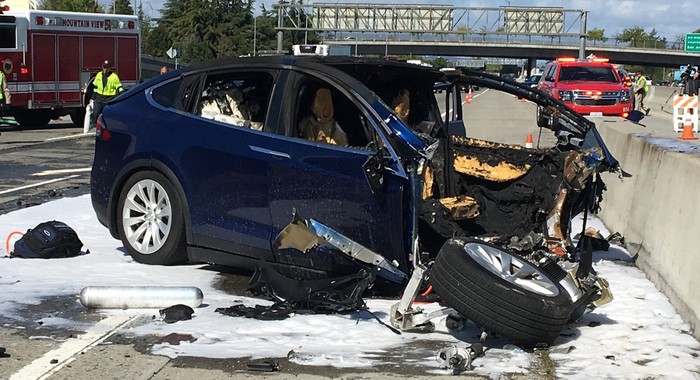
Tesla doubles down its defense of Autopilot after Model X crash
\"The fundamental premise of both moral and legal liability is a broken promise, and there was none here,\" the company says.
Tesla has stepped up its defensive arguments following the recent fatal Model X crash, insisting that the driver was solely responsible for failing to pay attention to the road as the Autopilot system steered into a highway divider.
The latest news reports include interviews with the family of victim Walter Huang, an Apple engineer who allegedly told his wife before the accident that Autopilot would intermittently steer toward the barrier in the spot where he finally crashed.
Tesla said it was "very sorry for the family's loss," however "Mr Huang was well aware that Autopilot was not perfect and, specifically, he told them it was not reliable in that exact location, yet he nonetheless engaged Autopilot at that location."
The company has claimed the driver had several hundred feet of visibility when the car turned toward the barrier, and he had ignored "multiple warnings" to put his hands on the wheel.
The statement does not explicitly claim that Huang did not have his hands on the wheel when he crashed, however, and separate tests by Model X owners show the car steering toward the barrier without alerting the driver to retake manual control of the vehicle due to a failure to recognize the road markings.
Huang is said to have purchased the Model X in November. It is unclear, however, if it was was a new model equipped with the latest Autopilot hardware or perhaps a pre-owned Model X with first-generation equipment.
The National Transportation Safety Board is currently investigating the accident.
<blockquote>The fundamental premise of both moral and legal liability is a broken promise, and there was none here. Tesla is extremely clear that Autopilot requires the driver to be alert and have hands on the wheel. This reminder is made every single time Autopilot is engaged. If the system detects that hands are not on, it provides visual and auditory alerts. This happened several times on Mr. Huang's drive that day.
We empathize with Mr. Huang's family, who are understandably facing loss and grief, but the false impression that Autopilot is unsafe will cause harm to others on the road. NHTSA found that even the early version of Tesla Autopilot resulted in 40% fewer crashes and it has improved substantially since then. The reason that other families are not on TV is because their loved ones are still alive.</blockquote>